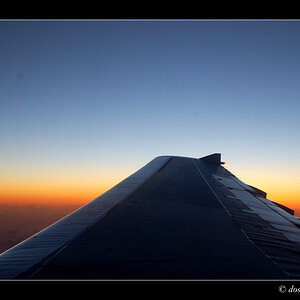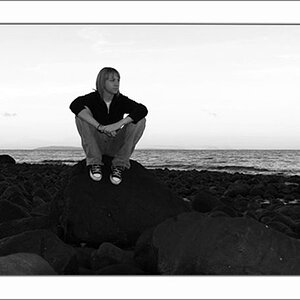GooniesNeverSayDie11
No longer a newbie, moving up!
- Joined
- Oct 7, 2010
- Messages
- 1,684
- Reaction score
- 203
- Location
- The Goondocks
- Can others edit my Photos
- Photos NOT OK to edit
This may be a sort of stupid question...
Lets say a hyperfocal distance is 1.5ft. Does that mean 1.5ft in front of the camera lens, or does it mean a perceived 1.5 feet in the actual frame. Like should I hold a piece of paper up to focus on it or just choose my lower most focusing point and maybe tilt the camera just slightly to focus on something that APPEARS to be about foot within the frame? Thats the only part I can't seem to find a clear answer on. The reason I ask is because with a superwide lens at say f/16 or f/22 and 10mm, Hyperfocal distance almost seems irrelevant because if you focus on something low in the frame, the minimum Focus should be well out of frame and almost at your tripod feet or whatever. So why would you even need to try to calculate, just shoot low in the frame and you would be safe almost every time if you were using really wide angles.
Lets say a hyperfocal distance is 1.5ft. Does that mean 1.5ft in front of the camera lens, or does it mean a perceived 1.5 feet in the actual frame. Like should I hold a piece of paper up to focus on it or just choose my lower most focusing point and maybe tilt the camera just slightly to focus on something that APPEARS to be about foot within the frame? Thats the only part I can't seem to find a clear answer on. The reason I ask is because with a superwide lens at say f/16 or f/22 and 10mm, Hyperfocal distance almost seems irrelevant because if you focus on something low in the frame, the minimum Focus should be well out of frame and almost at your tripod feet or whatever. So why would you even need to try to calculate, just shoot low in the frame and you would be safe almost every time if you were using really wide angles.













